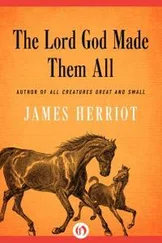At twilight Count Volkmar’s fever increased, and he could hear revelry in the castle. He asked again for his son, but Wenzel had to report that Luke had stolen the child and was keeping him hidden in the castle. To this sad news Volkmar said nothing, and it seemed certain that he must soon die, but at midnight he was still alive.
LEVEL
IV
The Fires of Ma Coeur
Seal of the town of Ma Coeur . Obverse: “VKMR VIII GRET S M CUR COND DOV REAVME DACR” (Volkmar VIII of Gretz, Sire of Ma Coeur, Count of the Kingdom of Acre) . Reverse: “CE EST LE CHAST DE MA COVER DE JESUS” (This is the castle of Ma Coeur de Jesus). Issued at Ma Coeur, June 11, 1271, upon the investiture of Volkmar VIII. Cast in bronze at St. Jean d’Acre by German-speaking artisans unfamiliar with the French used officially in the kingdom of Acre. Deposited at Makor April 2, 1291 C.E.
Cross section of Tell Makor from main gate on left to postern gate on right as it appeared in 1291 CE. when rubble had accumulated to a height of 67 feet. From left to right the structures of Ma Coeur are: tower of the main gate, minaret of the mosque, Crusader tower added to the Byzantine basilica of Father Eusebius, castle moat, main gate of the castle of Count Volkmar, principal castle building, north wall of the castle. The water system dug by Jabaal the Hoopoe in 966–963 B.C.E.-is shown as reopened by Gunter of Cologne in 1105 CE. The cave occupied by the Family of Ur in 9834 B.C.E. is shown, as is the monolith to El which this same family erected in 9831 B.C.E. and which now stands buried under the altar of the basilica.
In the spring of 1289, when the spiritual fire that had sustained the Crusades had died away to an ember, when Jerusalem was lost forever to the infidel, when the lovely chain of seaports reaching southward from Antioch had fallen permanently into enemy hands, and when a sense of doom hung over the land like a searing cloud of sand particles blown in by the khamsin, the walled city of St. Jean d’Acre still remained as the Crusader capital and the eighth Count Volkmar of Gretz still defended the castle of Ma Coeur as a bulwark of the faith, trusting that some miracle would permit him to retain it for another generation.
Then, on April 26, 1289, a miracle caused his prayers to be answered. The Mamelukes, a handful of slaves imported from Asia to serve the Turks, had somehow gained control of the vast Muslim empire and unexpectedly volunteered to extend their truce with Acre for the traditional period of ten years, ten months and ten days; and when this reassuring news sped across the Holy Land, caravans started moving once more between the Mameluke stronghold of Damascus and Acre. French and Italian newcomers, struggling ashore at the latter seaport after tedious voyages in dangerous ships, were frequently astonished to find that among the first persons to greet them upon landing at Acre were beturbaned merchants from Damascus, trying to earn an honest bezant by sharp trading with the Christians. It was difficult for these new arrivals to understand when the resident Crusaders explained: “Of course, it’s your duty to kill infidels, but not these infidels, because with them we conduct a very good trade from which everyone makes a profit.”
Among the first of the Muslim merchants to drive his camels across the overland route from Damascus was the old Arab Muzaffar, who in the fall of 1289 made one of his accustomed stops at Ma Coeur to peddle his pepper and nutmegs, his China silks and Persian brocades and, most importantly, to hand Count Volkmar a document from the Mameluke officials in Damascus. As always, the residents of the castle extended old Muzaffar a brotherly welcome, for through the years he had handled much business for them and was considered a member of the family, especially since years ago at the wedding of Volkmar VII, the present count’s father, the old Arab had advanced the castle a goodly sum toward the festival expenses.
He was short for an Arab and inclined toward fatness, so that when he stood against Count Volkmar, who like his ancestors was red-headed and rugged, he seemed flabby; but when properly dressed in fawn-colored robes, with a black and gold cord about his headdress, and with his white beard standing out from his tanned face, he was handsome; and when he delivered the official document he smiled warmly. “The Mamelukes grant you permission to go on pilgrimage,” he said in French, making himself comfortable in the castle hall.
“You’ve read it?” Volkmar asked in Arabic.
“Of course.” Abruptly he abandoned the count and hurried forward to greet the countess, who kissed him warmly on both cheeks. She was a slight, winsome creature whose plaited locks hung in two strands forward over her shoulders and reached to her waist. After studying her with approval Muzaffar observed in French, “Almost every garment you wear has reached Ma Coeur on my camels, and today I have a worthy successor.” He called for one of his men, who brought a leather box containing a long-trained dress made of samite, adorned with wide sleeves and decorations of pearl. “For a lady who is going on a pilgrimage,” he said graciously, and she realized that this beautiful garment was being offered as a gift.
“The Mamelukes have given permission?” she asked.
“After a little help, here and there,” he laughed, twisting his right hand this way and that to indicate bribery.
“You’re our dearest friend,” the countess cried, kissing him again, “but I’m not going.” The old Arab made as if he were taking back the dress, and she caught his hands. “But in my new dress I’ll make a little pilgrimage right here,” and from a window she pointed down to the basilica, the Maronite church and the Roman. The latter stood across from the mosque.
“But our son’s going,” the count explained.
“How excellent!” the old trader cried in French. “Volkmar! Take your pilgrimage next spring. We can meet in Saphet and ride across the hills together.”
The count, a tall rugged man in his forties, clean-shaven and sharp of feature but dark of face like his Holy Land ancestors, studied the proposal for some moments, then countered cautiously, “It would be appropriate to see Saphet with you, Muzaffar, but there are two drawbacks. In spring the Galilee grows warm, which would not of itself stop me, but from Saphet I’d planned returning over the hills to Starkenberg to show my son the German castle there, and that would take you far out of your way.”
“Not at all!” the old man protested. “I’ll send the camels along the trail with a driver. I’ll ride across the hills with you and catch up with the camels here.”
“Will you bring your own horse?” Volkmar asked.
“It might be better if you brought one for me … No! I’ll buy the best horse I can find in Damascus, then sell it when I reach Acre.”
“Agreed?” Volkmar asked.
“Saphet in April.” As the two friends shook hands, the Arab added, “And if I’m to do that I must be moving.”
“Not till you’ve eaten,” the count protested, and he called for an early lunch.
The great hall in which the two men sat had been finished in 1105 by Gunter of Cologne, and it was a masterpiece of Crusader art, its thin rock ribbing rising in a series of high arches into which narrow windows had been let. The stone floor was of excellent workmanship, each stone abutting tightly against its neighbor, so that in nearly two hundred years it had required resetting only once. When the paving was freshly oiled—as it was this day—it looked more like soft carpeting than hard stone.
About the room were placed statues of some of the famous owners of the castle, silver candlesticks from Damascus and Aleppo, items of gold from Baghdad and enameled boxes from Persia. Because wood was beginning to be scarce in the Holy Land the huge chests that lined the walls and the long table had come to Acre on Genoese ships from the forests of Serbia, but the spectacular tapestries that hung on the eastern wall had been woven in Byzantium.
Читать дальше
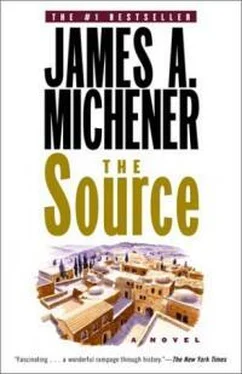
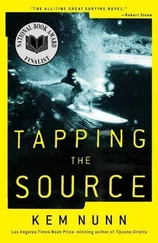


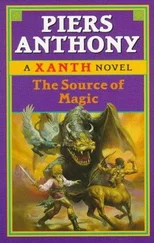

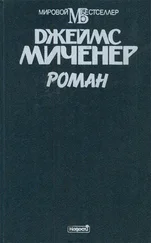
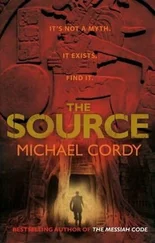
![Джеймс Купер - Пионеры, или У истоков Саскуиханны [The Pioneers, or The sources of the Susquehannah]](/books/395797/dzhejms-kuper-pionery-ili-u-istokov-saskuihanny-t-thumb.webp)
